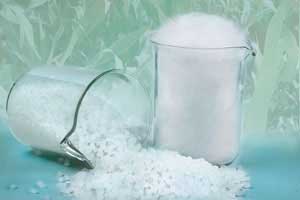
Trevira CEO Klaus Holz's contract renewed
Polyester fibre and yarn producer Trevira is to show its first fibre developments made from PLA biopolymer Ingeo made under license from NatureWorks alongside it established polyester specialties for hygiene and technical applications at this year’s INDEX 2011 nonwovens show. “Sustainability is an increasingly important issue in all textile applications, also in the nonwoven sector. Polyester has many properties that from the outset make it a material that is compati

14th March 2011
Innovation in Textiles
|
Bobingen

Polyester fibre and yarn producer Trevira is to show its first fibre developments made from PLA biopolymer Ingeo made under license from NatureWorks alongside it established polyester specialties for hygiene and technical applications at this year’s INDEX 2011 nonwovens show.
“Sustainability is an increasingly important issue in all textile applications, also in the nonwoven sector. Polyester has many properties that from the outset make it a material that is compatible with the environment. It is non-toxic, gives off no gases, and is recyclable without difficulty and it can be easily used as fuel to produce energy. It is kind to the skin and suitable for use in the food industry or medical sector,” a spokesperson for Trevira said in a recent statement.
Product certifications like Ökotex Standard 100 are an equally essential element of Trevira’s sustainability concept as are the observation of the environmental and quality standards DIN ISO 14001 and DIN ISO 9001. “Trevira’s range of ecological products is extended by the new Ingeo fibres which meet the needs of manufacturers and end users looking for a biological alternative for conventional fibres,” the company said.
The biodegradable (compostable) fibres made from renewable plant compounds are currently available in various versions. Trevira has produced first quantities of different fibre types applicable for spunlace, wet laid and carding applications. Possible end uses are said to be wet wipes (e.g. cleaning cloths), hygiene products and technical nonwovens. The new fibres are currently in qualification processes at customers and Trevira envisages a variety of applications in the nonwoven sector, mainly for hygiene products. In the near future, the company will also add a bicomponent fibre to its PLA product range.

Business intelligence for the fibre, textiles and apparel industries: technologies, innovations, markets, investments, trade policy, sourcing, strategy...
Find out more